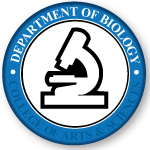Document Type
Article
Publication Date
8-11-2010
Publication Title
PLOS ONE
Volume
5
Issue
8
Abstract
Insect herbivores and fungal pathogens can independently affect plant fitness, and may have interactive effects. However, few studies have experimentally quantified the joint effects of insects and fungal pathogens on seed production in non-agricultural populations. We examined the factorial effects of insect herbivore exclusion (via insecticide) and fungal pathogen exclusion (via fungicide) on the population-level seed production of four common graminoid species (Andropogon gerardii, Schizachyrium scoparium, Poa pratensis, and Carex siccata) over two growing seasons in Minnesota, USA. We detected no interactive effects of herbivores and pathogens on seed production. However, the seed production of all four species was affected by either insecticide or fungicide in at least one year of the study. Insecticide consistently doubled the seed production of the historically most common species in the North American tallgrass prairie, A. gerardii (big bluestem). This is the first report of insect removal increasing seed production in this species. Insecticide increased A. gerardii number of seeds per seed head in one year, and mass per seed in both years, suggesting that consumption of flowers and seed embryos contributed to the effect on seed production. One of the primary insect species consuming A. gerardii flowers and seed embryos was likely the Cecidomyiid midge, Contarinia wattsi. Effects on all other plant species varied among years. Herbivores and pathogens likely reduce the dispersal and colonization ability of plants when they reduce seed output. Therefore, impacts on seed production of competitive dominant species may help to explain their relatively poor colonization abilities. Reduced seed output by dominant graminoids may thereby promote coexistence with subdominant species through competition-colonization tradeoffs.
Recommended Citation
Dickson TL, Mitchell CE (2010) Herbivore and Fungal Pathogen Exclusion Affects the Seed Production of Four Common Grassland Species. PLoS ONE 5(8): e12022. https://doi.org/10.1371/journal.pone.0012022
Creative Commons License

This work is licensed under a Creative Commons Attribution 4.0 License.


Comments
© 2010 The authors. This is an open-access article distributed under the terms of the Creative Commons Attribution License, which permits unrestricted use, distribution, and reproduction in any medium, provided the original author and source are credited.